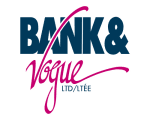The Circular Economy Applied to Denim
In the circular economy model, we keep denim in use for as long as possible, extract the maximum value from it during use, then recover garments and fibers at the end of each service life.
The circular economy of denim rests on three principles:
- Preserve natural capital by minimizing the amount of cotton required to manufacture new apparel and accessories
- Optimize cotton yields by circulating garments and denim at the highest utility at all times
- Designing out negative externalities, such as land use, air and water pollution, and the release of toxic substances
With price and supply risk as two main drivers for a change in the linear economic model, the circular economy of textiles bring new economic opportunities like: the creation of new employment opportunities, material cost savings, and increased innovation.
Aligning Sustainability and Salvage Recycling
As the leader of your organization, you care about sustainability and the impact that salvage recycling has on your brand. On the other hand, your Salvage Manager has the pressure to reach their monetary goals every month (loads have to leave the warehouse!). Aligning these two objectives is key to success as an organization. Carefully choosing your vendors to sell your salvage loads is the first step to ensure success.
Some good questions that you can ask to help you refine your vendors are:
- Vendor’s history: years in business, partners, references
- What happens to the products after leaving your warehouse?
- Where are these products sent to? What is done with the products when they arrive at the final destination?
- Why should your organization sell products to this vendor instead of someone else (unique value proposition)?
The right answers to these questions will put you on the path to maximizing the revenue of your salvage, as well as establishing your brand’s reputation as one that cares for the environment.
Maximize your Recycling Revenue
Recycling salvage product provides a steady revenue stream for your non-profit. Implementing the following tips will add value to your products and an additional boost to your bottom line:
- Sorting: this step is crucial to ensure that only acceptable product is sent to a customer
- Packaging: consider capsacks to maximize the load weight
- Storage: sufficient warehouse space allows you to process more goods, selling full loads and saving unnecessary disposal fees
- Loading: a raised dock will decrease loading times, saving on labor costs when loading 53 trailer or 40HC container loads
Revenue generated by selling full trailer/container loads can exceed up to 400% compared to a small box truck loads.








